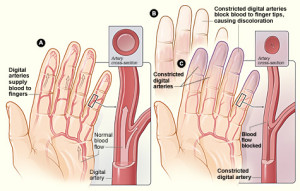Back To School Backpack Safety Tips
It’s back to school time again! It can be a fun and exciting time. New teachers, new classes, new books, maybe even a new school. It can also be a stressful time too. But the backpack does not need to be one of those stresses. Unfortunately backpacks seem to be getting bigger and heavier each year. Here are some back to school backpack safety tips to help keep your children safe this year.
What Makes a Good Backpack?
First off, what should you look for in a backpack? The most important thing is that a backpack fits well. Backpacks that are too big and hang below the waist can actually stress the low back and interfere with normal walking patterns. A good backpack should have wide padded shoulder straps to help spread the load on the shoulders as much as possible. You also want to look for adequate padding along the back, especially along the bottom where the edges of books might dig into the back. And if it has a waist strap to help stabilize the load, that is a good option. One other thing to consider is the number of compartments in the backpack. Having several compartments can be a good way to distribute the load more evenly.
How Much Should a Backpack Weigh?
Probably the most important thing in backpack safety is how much weight is carried in the backpack. Too much weight will change posture and interfere with balance. This can lead to injuries. Studies have shown that carrying 15-20% of your weight in a backpack changes posture and can be associated with pain. Loads of 25% of body weight can have a significant impact on balance while loads of 15% body weight can be tolerated moderately well. Ideally no more than 10-15% of body weight should be carried in a backpack. The less weight the better. If your child has to lean forward to accommodate the backpack it is too heavy. To give you an idea of how heavy 15% of the body weight is – a child who weighs 80 lbs. should carry no more than 12 lbs. in their backpack.
Backpack Safety Tips on Wearing a Backpack Properly
So now that you have a great backpack and have not overfilled it, how should you wear it? Well when putting on a backpack it should be lifted properly using the legs instead of the back. It is best to not swing or quickly sling the backpack on the back as this can pull you off balance and may lead to injury. The backpack should be worn with both shoulder straps. Only wearing one shoulder strap puts a lot of unbalanced stress on the spine. The shoulder straps should be snug but not too tight and the backpack should not hang down below the waist. The heaviest items should be positioned as close to the back as possible. If there is a waist strap that should be fastened to help prevent swinging of the backpack.
Conclusion
Back to school time can be great. But an overly heavy or improperly worn backpack can lead to pain and long term changes in posture. Be safe this school year and follow these backpack safety tips! And if your children are experiencing pain bring them in. I focus on helping families improve the health, vitality, and well-being of their children – providing a strong foundation for their future health.

